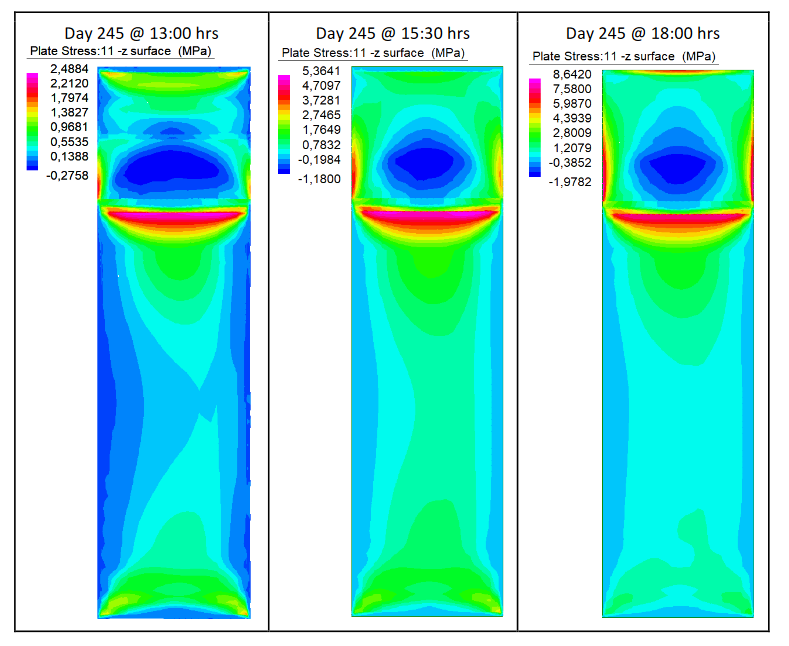Advanced Simulation for Thermal Stress Assessment

Abstract
In recent years, the desire for increased performance, transparency and visual flatness of glazing elements in curtain walls has generated renewed interest in thermally induced fractures. They typically occur under climatic conditions that induce a large temperature difference across the glass. During design, approximate tools are available to assess the expected temperature gradients that the glazing might be exposed to, however, they sometimes fail to adequately evaluate the actual induced thermal stresses. Additionally, current standards lack uniformly defined procedures and often carry simplified assumptions that lead to over-conservative results. This paper presents an advanced simulation workflow to accurately assess the temperature and stress distribution in glass lites for complex curtain wall applications. First, a 2D steady-state heat-transfer analysis is completed, followed by a simplified 2D transient simulation considering typical year weather data to identify the high-risk boundary conditions. Lastly, a refined 2D–3D transient thermal model is created, whose outputs are translated into thermal stresses on the glass surface and edges through mechanical finite element modeling. This combined thermal–mechanical analysis allows for a more accurate temporal and spatial assessment of the temperature and stress distribution on each glass lite compared to linear approaches. This paper will present a case study to display the proposed workflow and prove how 2D steady state assessments and linear stress calculation tend to be more conservative by 60–80% when compared to 3D transient combined thermal–mechanical analysis.
Published
Issue
Section
Experimental & Numerical Investigations
License
Copyright (c) 2024 Andrea Zani, Jamie Reyes, Jacob Hanke, Giacomo Zangiacomi, Guido Lori

This work is licensed under a Creative Commons Attribution 4.0 International License.



